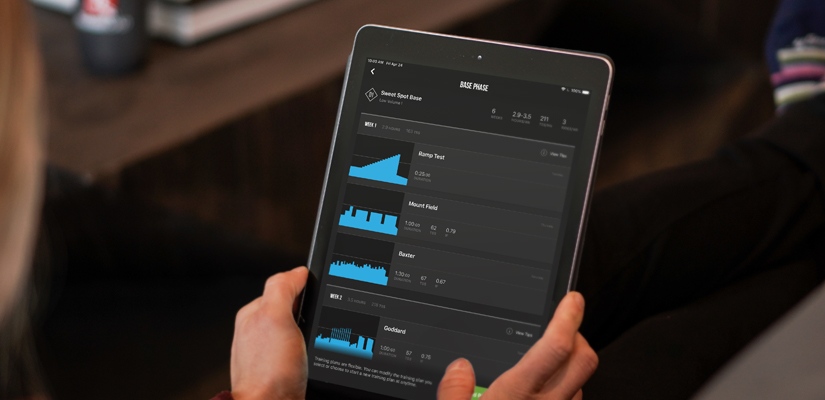Sweet Spot Intervals: How to Execute Them
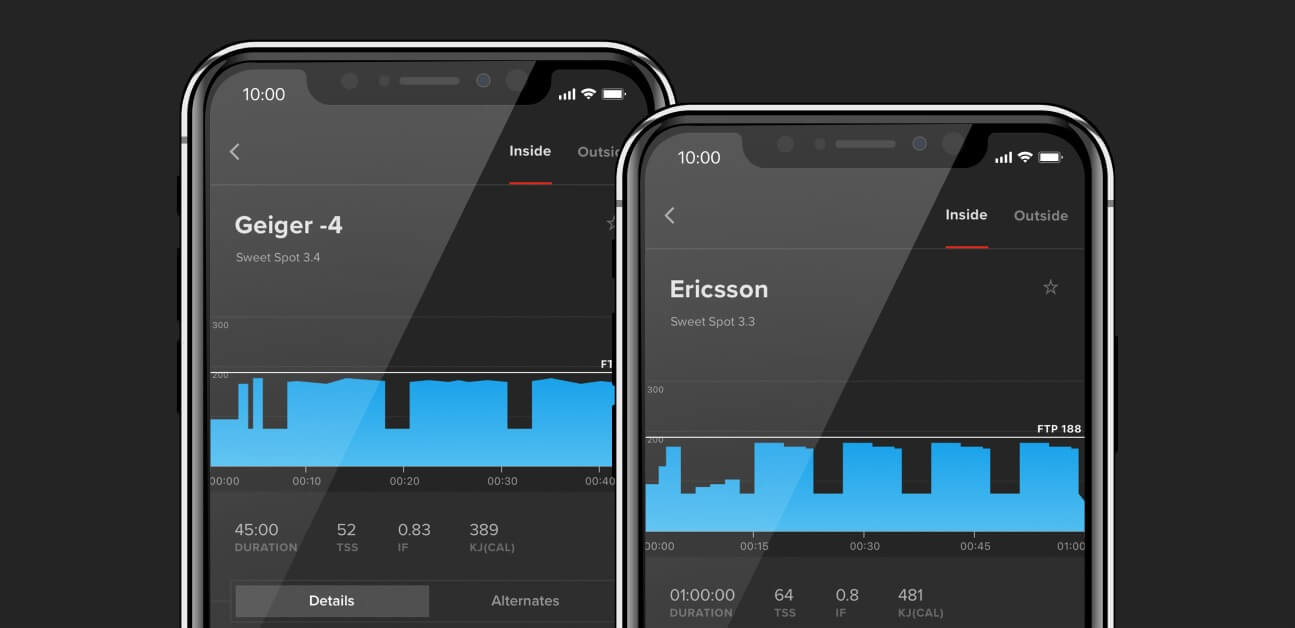
Sweet Spot intervals are one of the most effective ways to get faster. And while they might feel difficult now, you can quickly improve your ability to nail these types of workouts. Let’s take a look at how to execute your Sweet Spot intervals.
For more information on Sweet Spot training, check out Ask a Cycling Coach Ep 284.
What is Sweet Spot?
Sweet Spot refers to a cycling power zone that is between 88-94% of your Functional Threshold Power (FTP). Training with Sweet Spot intervals is challenging enough to drive aerobic adaptations but easy enough that you can do it several times a week. In other words, Sweet Spot training strikes an ideal balance between training stimulus and your ability to recover. For more information, read our in-depth guide to Sweet Spot Training.
Goals of Sweet Spot Training
The primary goal of Sweet Spot training is to increase your aerobic fitness. Strengthening your aerobic energy system increases the amount of oxygen you can put to work which increases your FTP. Sweet Spot training will increase capillarization, mitochondrial strength, fat metabolism, and muscular endurance—all things that help make you a faster cyclist.
Training in different power zones results in various effects on your fitness. Sweet Spot training aims to improve your ability to resist fatigue while sustaining fairly high power. This enhances your cycling performance by raising your FTP. So whether you are training for your first century or a cross-country MTB race, Sweet Spot training is a great option.
One of the greatest benefits of Sweet Spot training is that it’s incredibly time-efficient compared to the traditional, low-intensity method of building aerobic base fitness. Most of us don’t have twenty hours a week to train and are limited by important family and professional responsibilities.
Sweet Spot Workouts
Sweet Spot workouts come in many varieties with an almost endless combination of intensity and duration. However, they will all include efforts that range from 88-94% of your FTP. A common misconception is that long Sweet Spot intervals are easy. But this isn’t the case.
These intervals should feel uncomfortable, particularly so when you haven’t given much time or attention to them. Sweet Spot intervals are difficult because they target a high power zone for a relatively long time. Once again, this is hard and feels hard, but the benefits for you as an endurance cyclist are massive.
Example Intervals
Sweet Spot intervals can vary in intensity and duration. You can filter all the workouts in the TrainerRoad library to find just the right workout. You can even go a step further and filter by Workout Level. Here are a few examples.
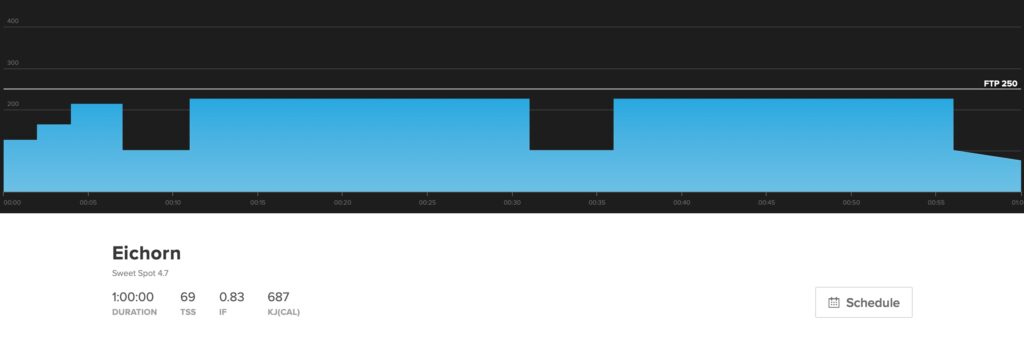
Eichorn is a classic example of 2×20-minute Sweet Spot intervals. However, twenty minutes at this intensity is difficult, especially for someone just starting. By learning to endure long stretches at this power output, you can count on having the endurance necessary to hang on during a long, fast group ride, climb a fire road at a moderately high yet steady pace, or even spend greater durations in your aero or climbing positions without sacrificing power output.
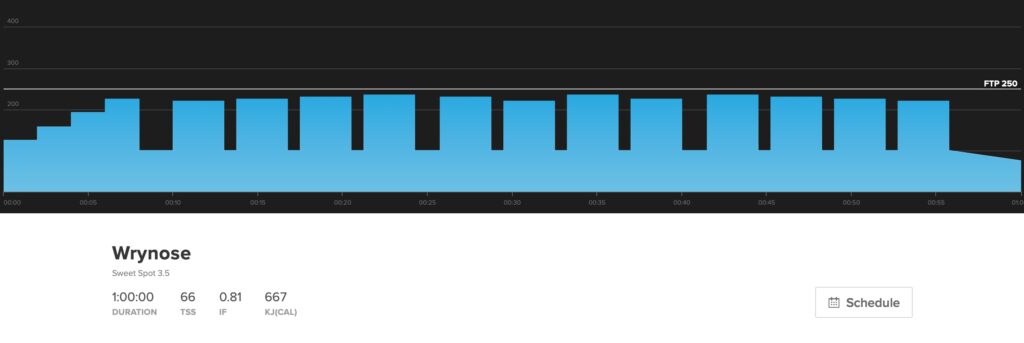
Instead of long twenty-minute intervals like Eichorn, Wrynose offers more rest by breaking the intervals into three-minute efforts. Even with the added rest, you can accumulate a lot of time at meaningful levels of stress.
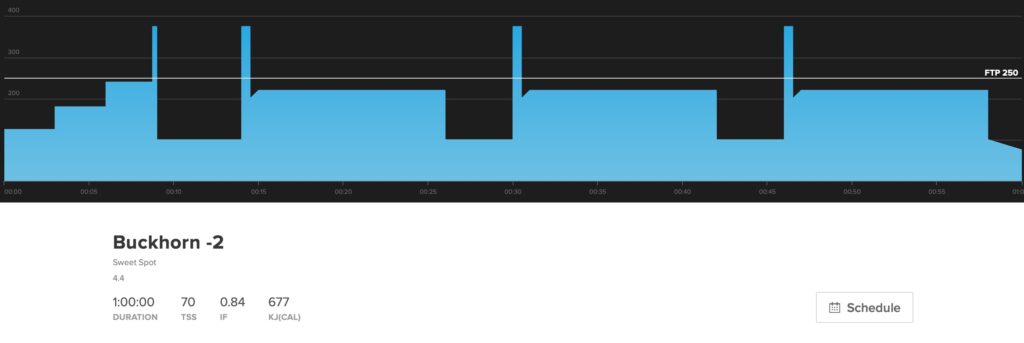
Buckhorn -2 is an example of hard start, sweet spot intervals. The initial sprints tacked onto these repeats will improve your ability to generate a lot of power at once, albeit for very short durations. So when it comes time to accelerate—at the start of a race, during brief, hard surges up a hill, or when jumping on a wheel—the necessary explosiveness will be there.
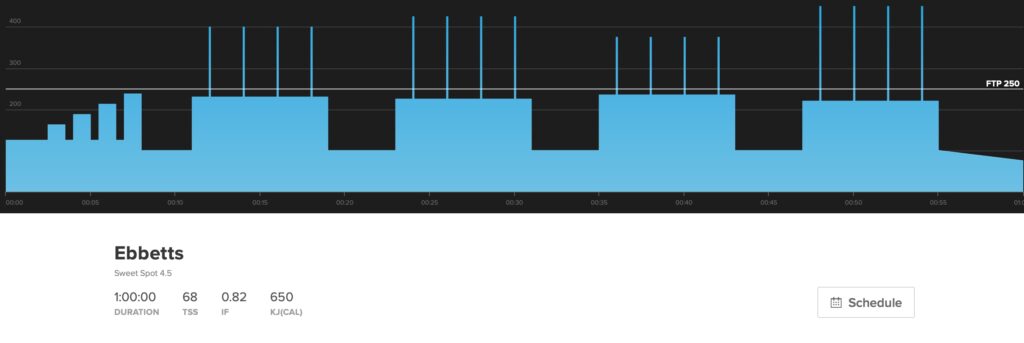
Ebbetts is a Sweet Spot workout with short power bursts that aim to increase your ability to generate a lot of power in a very short period of time. A workout like this increases how much muscle you can activate and how quickly you can do it.
Progressing your Sweet Spot Intervals
As you progress your workouts should increase in their level of difficulty. You can progress your Sweet Spot intervals with higher power targets, longer intervals, less rest in between intervals, or a combination of all three. Additionally, this increase in stimulus should be just enough to push your current limits, but not so much that it overwhelms you.
Every TrainerRoad training plan follows a specific series of progressions. If you’re new to Sweet Spot intervals, you’ll want to start with shorter intervals that will help ensure that you can finish the workout while hitting your power targets. As your fitness grows, you’ll increase the difficulty with intervals that are longer, slightly more intense, or both. As a result, your total time in the Sweet Spot zone will increase.
Executing a Sweet Spot Workout
Sweet Spot training can be hard, especially if you are new to it. Here are tips that will help you make the most of Sweet Spot intervals.
Before
First and foremost, you will need an accurate FTP. An up-to-date FTP ensures that the workout is scaled to your current level of fitness. Because Sweet Spot intervals are a narrow range, an incorrect FTP can make them Threshold intervals instead. The easiest and most efficient way to assess your FTP is with a Ramp Test.
Aside from an accurate and recent FTP, nutrition is one of the most important things to nail down. Sweet Spot training burns a ton of glycogen, so ingesting some carbs beforehand is crucial for your performance. The goal is to ensure sufficient glycogen stores are in the liver and muscles. You can make sure you are ready for work by eating a carb-rich meal about 3-4 hours before getting on the bike.
Finally, you’ll want to make sure you have a way to keep yourself cool if you’re training indoors. One of the most common mistakes we see is inadequate cooling. Get at least one fan that moves a high volume of air and position it to cover the maximum amount of surface area on your body. We like this fan.
During
During the workout, you’ll want to focus on two things—fueling and pedaling. Eating during a Sweet Spot workout is all about fueling the muscles for the work they are doing, so you will want simple carbohydrates that are quickly processed and absorbed. This includes items like sports drinks, chews, and gels. Eating during Sweet Spot training is an excellent way to experiment with nutrition strategies for your big event.
Additionally, you’ll want to pay attention to your cadence. Sweet Spot intervals are challenging, and grinding in a big gear can cause excessive fatigue, especially during long intervals. In general, try to keep your spin between 85-95 rpm.
After
After you’re done, prioritize recovery with rest and nutrition. While they’re not the highest of intensities, Sweet Spot intervals take a physical toll and deplete glycogen levels. You can get ahead of the curve by eating a regular meal or a simple recovery drink. Either way, you want to ensure that you are ready to go for your next Sweet Spot workout.
